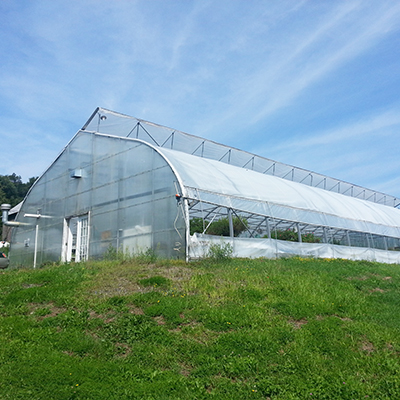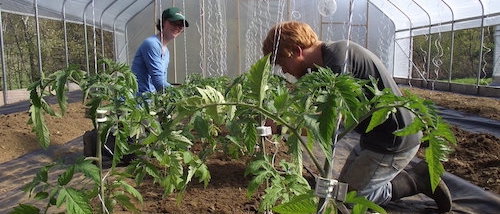January 2010
Hoophouse update: most profitable uses
Urban farms start to meet with resistance
Advice for winter down time: go to school and learn a skill
Water greenhouse plants automatically
Take dahlia cuttings now for hoophouse planting
February 2010
Managing hoophouse soils, weeds, pests, disease
A daughter reflects on her family farm's lessons
Don't heat the whole greenhouse
Celery and celeriac: seeding is the hardest part
Urban farming fears: disease, noise, commerce
A quest for long-stemmed sweet peas
March 2010
Movable hoophouses: the next generation
Growing peas, even where it's hot
Building an efficient wash station
Welcome new additions to summer bouquets
Equipment to make root washing easier
April 2010
What's ahead for CSA? Some growers worry as CSAs get even larger
Beets and carrots: what you need to succeed
Sharpen your tools for greater efficiency
Free spreadsheets for market farms
Scheduling crops in the hoophouse
Even California winters benefit from hoophouses
May 2010
New strategies make great-tasting tomatoes
Greens all winter, even at -35
Winter squash extend the season
Many kinds of weeds, many kinds of hoes
It's easy to fall in love with lilacs
June/July 2010
Caterpillar tunnel: An inexpensive variation on the hoophouse theme
An inexpensive substitute for refrigerated truck
New resources, ideas on setting prices
Plow pan may be cause of reduced yield, stunted growth in plants
Using hoes for maximum weed control
Plan a long season of sweet corn
Wedding flowers profitable, but time-consuming; figure out the level of service you can offer brides
August 2010
Hoophouse crops for winter harvest
New book outlines 11 steps to success
Choose the best spreader for your fertility needs
Market scenes: Fayetteville, AR
Credit cards at market? There's an app for that
Wedding flowers, part 2: Prices, estimates, contracts
September 2010
Vegetables that can take the cold
Managing caterpillars organically
New tomato varieties resistant to late blight
Crop spacing affects more than yield
Fall ornamentals bring late-season cash
October 2010
A quick and easy way to cover hoophouse crops
The scientific truth about garlic varieties
New insurance program offers both general liability and product liability for farmers market vendors
Customize garden carts for farm tasks
Plant bulbs now for bountiful spring bouquets
November/December 2010
Common greenhouse problems-solved!
Tools and gizmos for gift-giving
Spreadsheets simplify crop planning, recordkeeping

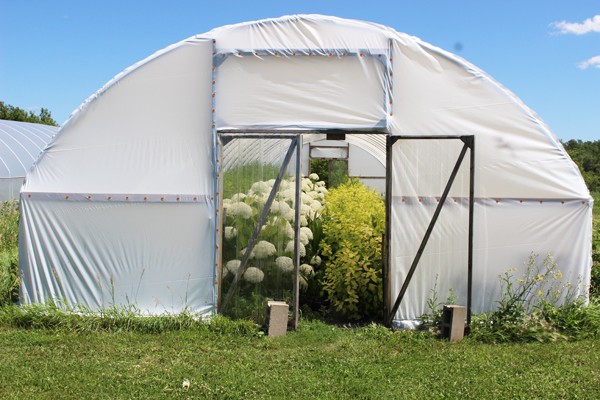 With protected space on the farm at a premium, we have to choose wisely when deciding which crops are worth putting under cover. We start out by deciding what to grow overall, and then deciding how much of that can fit inside structures, by doing a little revenue and profit analysis. Quickbooks is used to record sales, so it’s easy to list sales per item at the end of the year to see what brought in the most revenue. A version of that report extracted to a spreadsheet calculates profit per square foot by first subtracting the costs of plugs or bulbs, and then dividing by the cultivated area for each item.
With protected space on the farm at a premium, we have to choose wisely when deciding which crops are worth putting under cover. We start out by deciding what to grow overall, and then deciding how much of that can fit inside structures, by doing a little revenue and profit analysis. Quickbooks is used to record sales, so it’s easy to list sales per item at the end of the year to see what brought in the most revenue. A version of that report extracted to a spreadsheet calculates profit per square foot by first subtracting the costs of plugs or bulbs, and then dividing by the cultivated area for each item. 
 Prairie Garden Farm has been growing cut flowers for florists and studio designers since 2010. As we’re on an exposed hillside in west-central Minnesota, we’re dependent on protected culture to grow quality flowers. This article describes our approach – planning, financial, and operational details - that helps us make the most of our structures.
Prairie Garden Farm has been growing cut flowers for florists and studio designers since 2010. As we’re on an exposed hillside in west-central Minnesota, we’re dependent on protected culture to grow quality flowers. This article describes our approach – planning, financial, and operational details - that helps us make the most of our structures.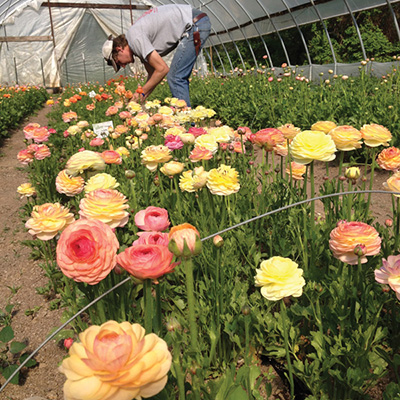
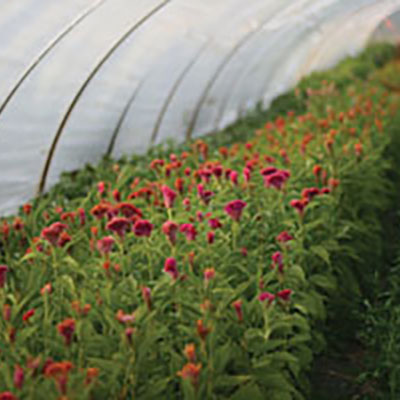
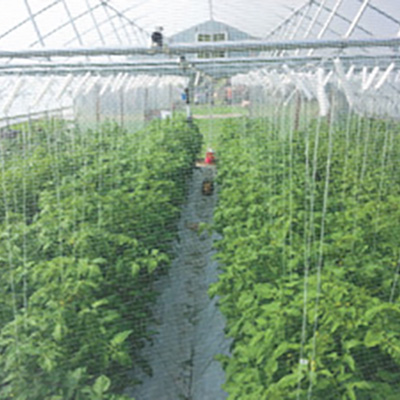

 Why two of our hoophouses are named because of Emily
Why two of our hoophouses are named because of Emily
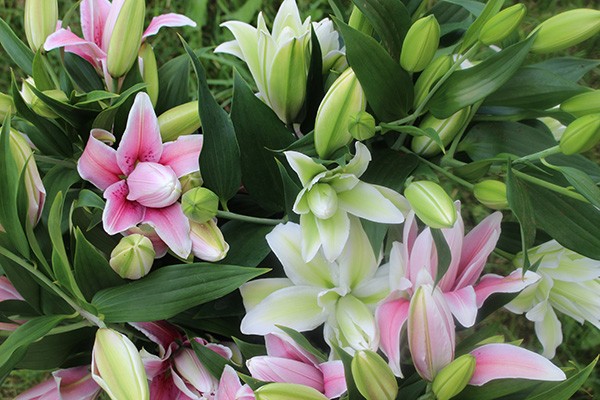 As soon as we start driving our routes in the spring our customers ask us when we’ll have roselilies. They’re that popular and have become a signature crop for us. They’re basically a type of oriental lily, but with multiple layers of petals, and without stamens and pistils (i.e. no pollen!).
As soon as we start driving our routes in the spring our customers ask us when we’ll have roselilies. They’re that popular and have become a signature crop for us. They’re basically a type of oriental lily, but with multiple layers of petals, and without stamens and pistils (i.e. no pollen!). 
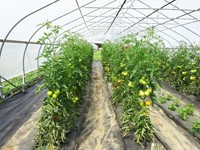

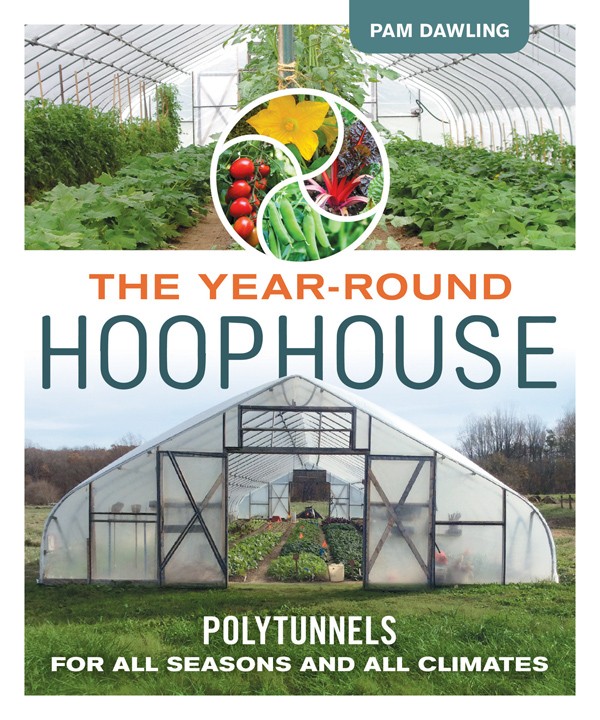 In the hoophouse plants grow bigger and faster. We want to avoid anything that slows growth down. All that growing burns up the organic matter and nutrients in the soil at a fast rate, particularly in hot, humid climates. We need to replenish the soil more generously and more often than we do outdoors. Good soil health means having enough plant nutrients, not surplus. If you have too much soluble nitrogen (N), it can leach into the groundwater or burn up the organic matter. Using manure or compost for a nitrogen source can cause the build-up of excess phosphorus (P).
In the hoophouse plants grow bigger and faster. We want to avoid anything that slows growth down. All that growing burns up the organic matter and nutrients in the soil at a fast rate, particularly in hot, humid climates. We need to replenish the soil more generously and more often than we do outdoors. Good soil health means having enough plant nutrients, not surplus. If you have too much soluble nitrogen (N), it can leach into the groundwater or burn up the organic matter. Using manure or compost for a nitrogen source can cause the build-up of excess phosphorus (P).
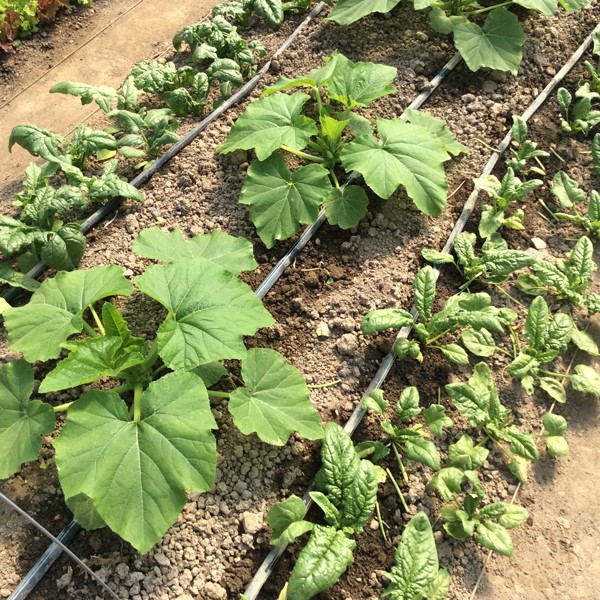 We have three main seasons in our zone 7 central Virginia hoophouse: fall-winter (October to March), spring-early summer (March to July) and high summer (August and September). We grow one bed (90’/27.5 m or so) each of yellow squash and bush cucumbers in the spring-summer season, for reliable early harvests and to help with crop rotation. If you farm in a colder climate than ours, you might be questioning allocating the precious real estate to a crop that so quickly goes from desirable to over-abundant, especially when there are more profitable things to give the space to. One reason is a difference between southern and northern climates.
We have three main seasons in our zone 7 central Virginia hoophouse: fall-winter (October to March), spring-early summer (March to July) and high summer (August and September). We grow one bed (90’/27.5 m or so) each of yellow squash and bush cucumbers in the spring-summer season, for reliable early harvests and to help with crop rotation. If you farm in a colder climate than ours, you might be questioning allocating the precious real estate to a crop that so quickly goes from desirable to over-abundant, especially when there are more profitable things to give the space to. One reason is a difference between southern and northern climates.
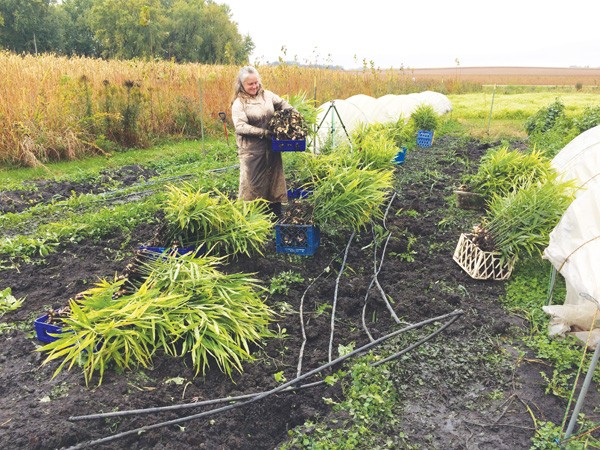 Local and organic ginger is a high-value crop that in the right market can be in high demand. Growing this tropical crop in the Midwest can be a challenge, and thus far, farmers thought they had to own a high tunnel to ensure adequate heat during the variable spring and fall seasons. High tunnel space on most farms is at a premium, so it is expensive space to devote to a long-season crop.
Local and organic ginger is a high-value crop that in the right market can be in high demand. Growing this tropical crop in the Midwest can be a challenge, and thus far, farmers thought they had to own a high tunnel to ensure adequate heat during the variable spring and fall seasons. High tunnel space on most farms is at a premium, so it is expensive space to devote to a long-season crop. 
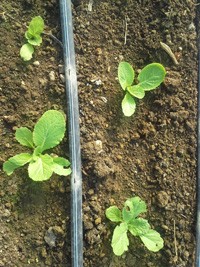 When we talk about high salt levels in soils we do not mean simply sodium chloride, as we would if we complained of too much salt in our soup. “Salts” in the agricultural sense means all soluble ions or nutrients - nitrate, ammonium, potassium, calcium, magnesium, chloride and sulfate. Remember that these are essential nutrients – they are our friends. As with much in agriculture, soluble salt concentration is a matter of balance.
When we talk about high salt levels in soils we do not mean simply sodium chloride, as we would if we complained of too much salt in our soup. “Salts” in the agricultural sense means all soluble ions or nutrients - nitrate, ammonium, potassium, calcium, magnesium, chloride and sulfate. Remember that these are essential nutrients – they are our friends. As with much in agriculture, soluble salt concentration is a matter of balance.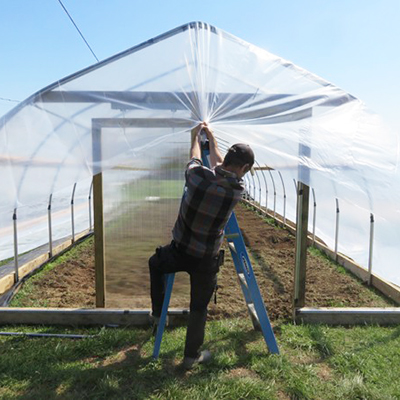
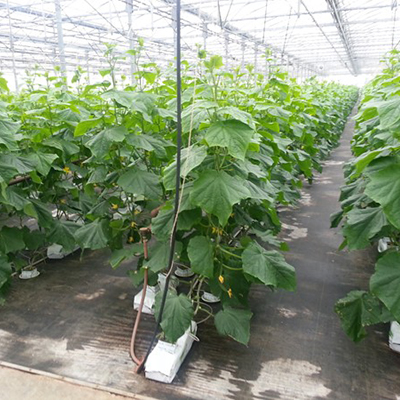
 I’ve often wondered why more market growers don’t use umbrella pruning for greenhouse and hoophouse cucumbers. It’s probably the most common way of growing cukes in greenhouses, and translates well to hoophouses and smaller structures with trellising in the 6-7’ range. I’m pretty sure the reason it’s not used more is unfamiliarity, since most smaller growers I’ve talked with don’t know about it. It’s called umbrella style because the main stem is grown up a string (the umbrella handle), topped at the wire, and two suckers are allowed to grow out to each side (the umbrella canopy).
I’ve often wondered why more market growers don’t use umbrella pruning for greenhouse and hoophouse cucumbers. It’s probably the most common way of growing cukes in greenhouses, and translates well to hoophouses and smaller structures with trellising in the 6-7’ range. I’m pretty sure the reason it’s not used more is unfamiliarity, since most smaller growers I’ve talked with don’t know about it. It’s called umbrella style because the main stem is grown up a string (the umbrella handle), topped at the wire, and two suckers are allowed to grow out to each side (the umbrella canopy).